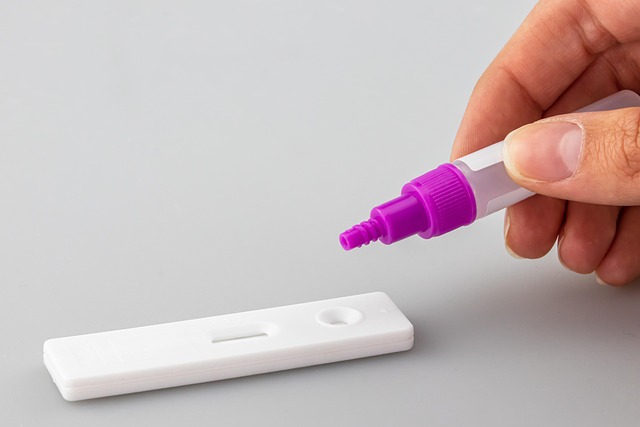Older homes in San Antonio built before 1978 may contain lead paint, posing health risks. Professional lead paint inspections follow EPA standards using XRF analysis and lab testing to identify lead levels. Certified inspectors conduct visual exams, sample collection, and dust testing for remediation per EPA guidelines, ensuring occupant safety and compliance. A thorough inspection process includes protective gear, target area identification, sampling, testing, documentation, and detailed reporting.
In San Antonio, lead paint inspections are crucial for ensuring the safety of residents living in older homes. With potential risks associated with lead paint exposure, understanding EPA-compliant procedures is essential. This article guides you through the process, from identifying lead paint risks to following San Antonio’s inspection protocols and a comprehensive step-by-step lead testing guide. Stay informed to protect your family and home.
- Understanding Lead Paint Risks in Older Homes
- San Antonio's EPA-Compliant Inspection Protocols
- Step-by-Step Guide to Effective Lead Testing
Understanding Lead Paint Risks in Older Homes

Many older homes in San Antonio, built before 1978, may contain lead-based paint, posing significant health risks to occupants, especially children and pregnant women. Lead paint inspection is crucial to identifying these dangers and ensuring EPA-compliant procedures for safe removal or encapsulation. Professional lead paint testing services are essential to accurately assessing the presence and extent of lead in older homes, as visual inspections alone may not reveal hidden lead-based paint.
During a lead paint inspection, trained professionals use advanced methods like XRF (X-ray Fluorescence) analysis to collect samples from various surfaces, including walls, trim, and doors. These samples are then sent for laboratory testing to determine the lead content. Understanding the risks associated with lead paint is the first step towards mitigating them through proper testing, abatement, or preventive measures as required by EPA regulations.
San Antonio's EPA-Compliant Inspection Protocols

In San Antonio, lead paint inspection for older homes is a critical process that adheres to Environmental Protection Agency (EPA) standards and regulations. The city’s EPA-compliant inspection protocols are designed to ensure the safety of both residents and the environment by identifying and mitigating potential risks associated with lead-based paint. These inspections are particularly crucial in older homes, which were constructed before 1978, when lead-based paint was commonly used.
San Antonio’s protocol involves a thorough assessment conducted by certified inspectors who employ various methods, including visual examination, surface sampling, and dust collection, to determine the extent of lead contamination. If elevated levels of lead are detected, appropriate remediation measures are implemented in accordance with EPA guidelines. This includes containment procedures, proper disposal of contaminated materials, and, if necessary, the re-inspection of the property to ensure compliance and the safety of occupants after remediation.
Step-by-Step Guide to Effective Lead Testing

Performing a lead paint inspection is crucial for older homes in San Antonio, where lead-based paint is a common concern. Here’s a step-by-step guide to ensure EPA-compliant procedures:
1. Preparation: Begin by gathering necessary tools and protective gear, including a lead paint test kit, gloves, goggles, and a respirator. Familiarize yourself with the inspection process and local regulations before starting.
2. Identifying Target Areas: Focus on areas prone to chipping or peeling paint, such as windows, doors, trim, and walls in older homes. Pay special attention to surfaces that have been repaired or renovated historically, as these might contain lead-based materials.
3. Sampling Collection: Collect paint samples from suspected areas using a scalpel or a similar sharp tool. Scrape the surface to gather at least 25 milligrams of paint powder for testing. Ensure that you collect representative samples by taking multiple swabs from different locations.
4. Testing Samples: Follow the instructions provided with your lead paint test kit. These kits typically use a color-change reaction or atomic absorption spectroscopy to detect lead levels. Record the results accurately, documenting any readings above 1.15 mg/cm² (actionable level for lead-based paint).
5. Documentation and Reporting: Maintain detailed records of all inspection findings, including photos and notes on sample collection locations. Prepare a comprehensive report summarizing the test results, areas of concern, and recommendations for abatement if necessary.
When it comes to ensuring the safety of San Antonio’s older homes, a thorough understanding of lead paint inspection protocols is paramount. By adhering to EPA-compliant procedures, such as those outlined in this guide, homeowners and professionals can effectively mitigate risks associated with lead paint. Following the step-by-step approach discussed, including proper sampling techniques and certified laboratory analysis, allows for accurate detection and responsible management of lead-based paint hazards, promoting a healthier environment for all residents.
